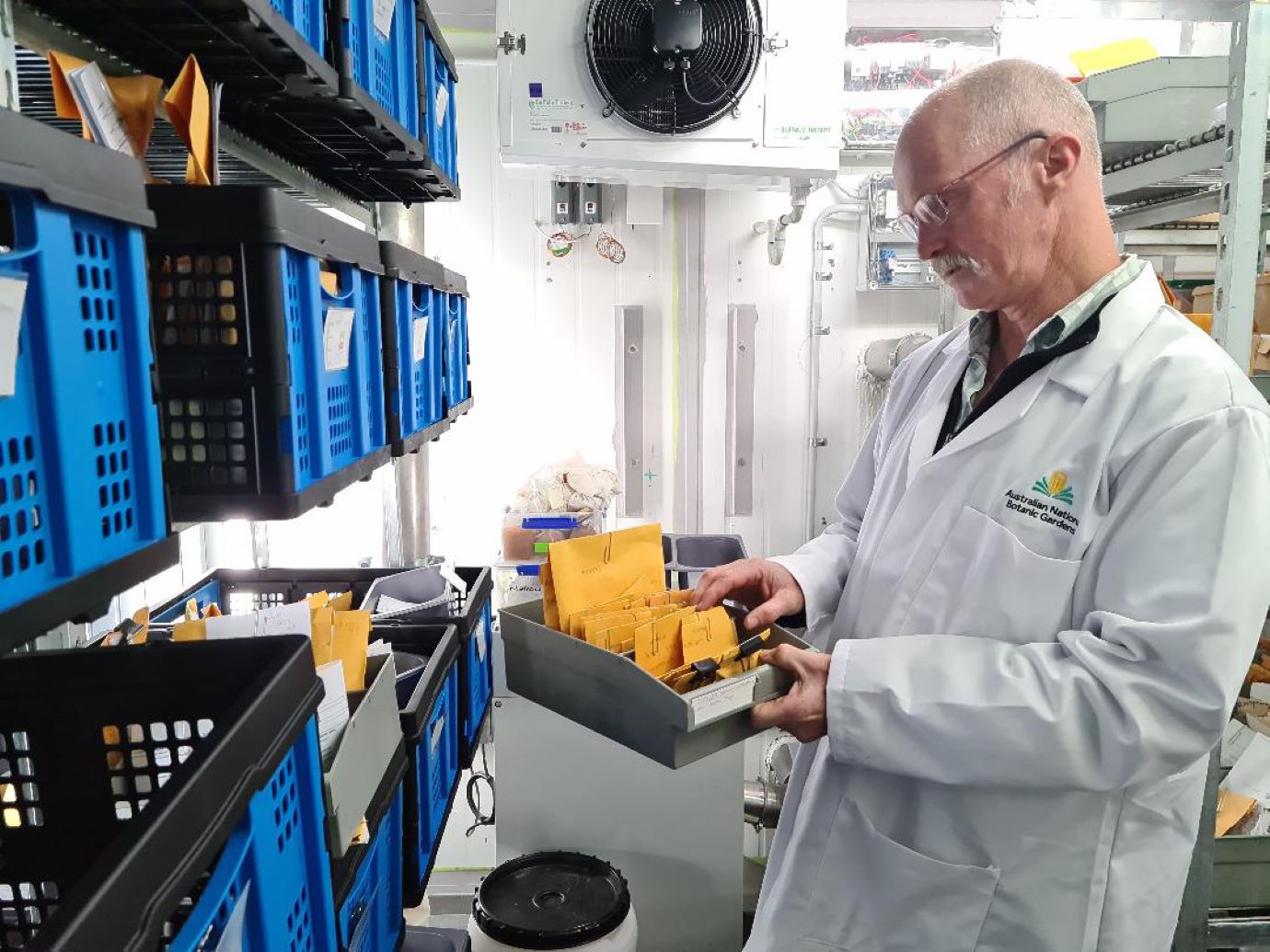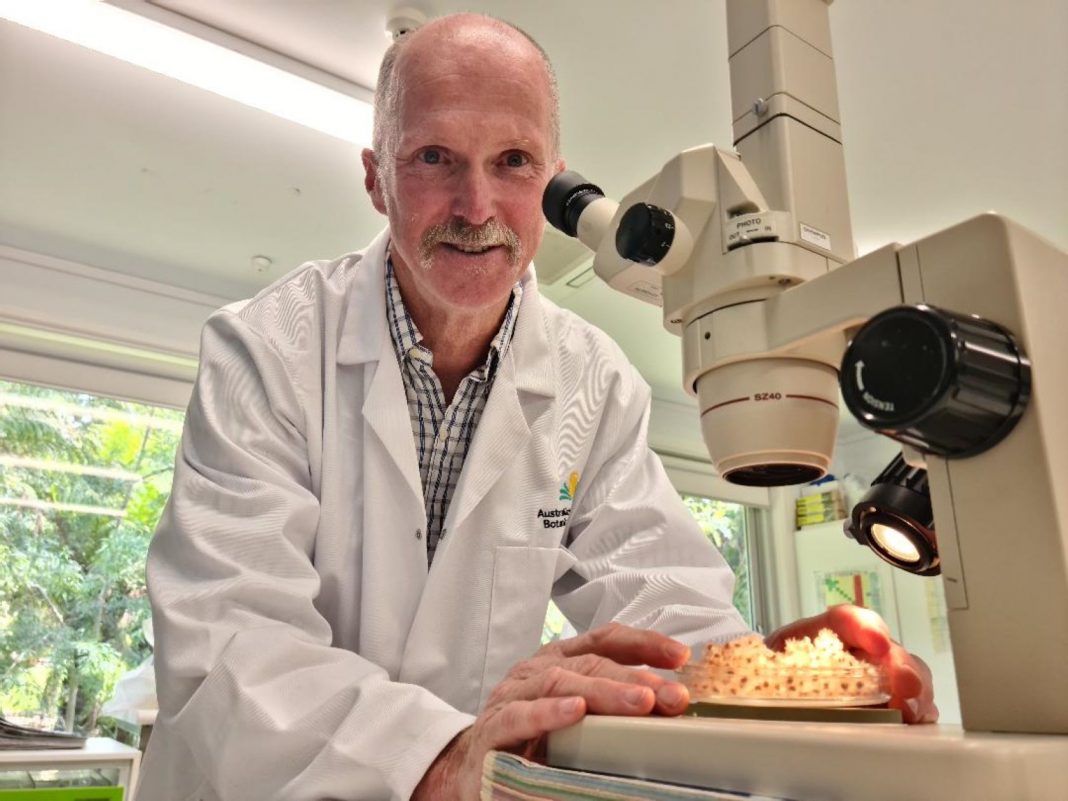Few Canberrans would know we have an extinction vault – a secure collection of about 8 million precious seeds that are an insurance against native plant extinction.
Plants are not as charismatic as animals (koalas get more attention) but Australia’s rate of plant extinctions stands at 36 since records began (probably more have been lost before scientists even knew they existed).
Canberra’s extinction vault is a last stand (its official government title is ‘National Seed Bank’). Astonishingly, it is kept in a modified 1960s caretaker cottage at the base of Black Mountain, amongst the Australian National Botanic Gardens (ANBG).
Wired with security alarms and temperature controls, it guards seed from 4,000 plant species – 139 of which are threatened. The tiny red-brick cottage is rapidly running out of room.


It’s surprising that the future of Australia’s native flora resides in such modest accommodation. If a fire was to threaten the Gardens, the seed collection that dates back to 1962 could be lost forever.
Back in 2021, the Australian Government unveiled plans for a 120 square-metre concrete vault with 50cm thick walls to withstand environmental disasters such as bushfire or extreme weather. Fire retardant materials would be used along with backup generators in case of power failure.
Construction was due to begin mid-2023 year but work has yet to start.
A Parks Australia spokesperson said a design development process was completed in late 2022 and it has approached the market for construction options. “Parks Australia is assessing the responses from the tender process and will announce next steps in the coming months.”
Canberra’s extinction vault is not unlike the “doomsday seed vault” buried underground in the arctic ice near the North Pole, which safeguards the world’s crops from nuclear war or global warming.
Our vault is a lifeline for Australia’s disappearing flora – Australia’s threatened plant communities are declining by 72 per cent – faster than threatened mammals.
Inside the cottage, where the 1960s kitchen and dining room once stood, is a sterile laboratory with six germination incubators and three storage freezers (-21°C). Next door is a drying room (15°C, 15 per cent relative humidity) and opposite, in an old demountable house, is an X-ray room and cleaning and packaging areas.
“The seed bank ensures that we secure seed of species under threat so that if we lose them in the wild we have the option of being able to go to the bank and germinate seedlings for return to the wild,” Tom North, Curator of the National Seed Bank, said.
Do not underestimate the value of Australia’s native flora – 84 per cent of our plants are found nowhere else in the world. Worryingly, 254 plants are at high risk of extinction (Environment Protection and Biodiversity Conservation Act 1999).
“With each passing year, the window of opportunity to collect seed is getting smaller and for some species, producing seed in a drought year just doesn’t happen,” said Tom, who travels to such far-flung places as Christmas Island, Kakadu National Park and Norfolk Island to collect seed.
The Bureau of Meteorology recently announced El Nino conditions and below-average rainfall for November to January.
In our own backyard, the extinction vault has revived an endangered ACT plant that was on the brink of extinction. The Tuggeranong Lignum was restricted to a single population in the Murrumbidgee River Corridor of the ACT.
ANBG horticulturalists used cuttings to grow a collection of plants as a safety net for the wild population. Fruits sprouted on the plants for the first time last year, producing the first seeds for the vault’s collection.
An elusive seed they’ve yet to find is the slender parrot-pea, a trailing shrub only found in eastern subalpine regions, which were severely impacted by the 2020 bushfires. The only plants found were in remote, hard-to-access areas and when collectors found the site there were no mature seeds. If Canberrans want to help, there’s a profile on Canberra Nature Map where the public can add sightings.
The Australian Government investment for the proposed new $7.2 million vault includes $650,000 from public and philanthropic donations.
Canberra Nature Map: https://canberra.naturemapr.org/species/525
(Our journalist Georgia Curry is a volunteer at the National Seed Bank.)



